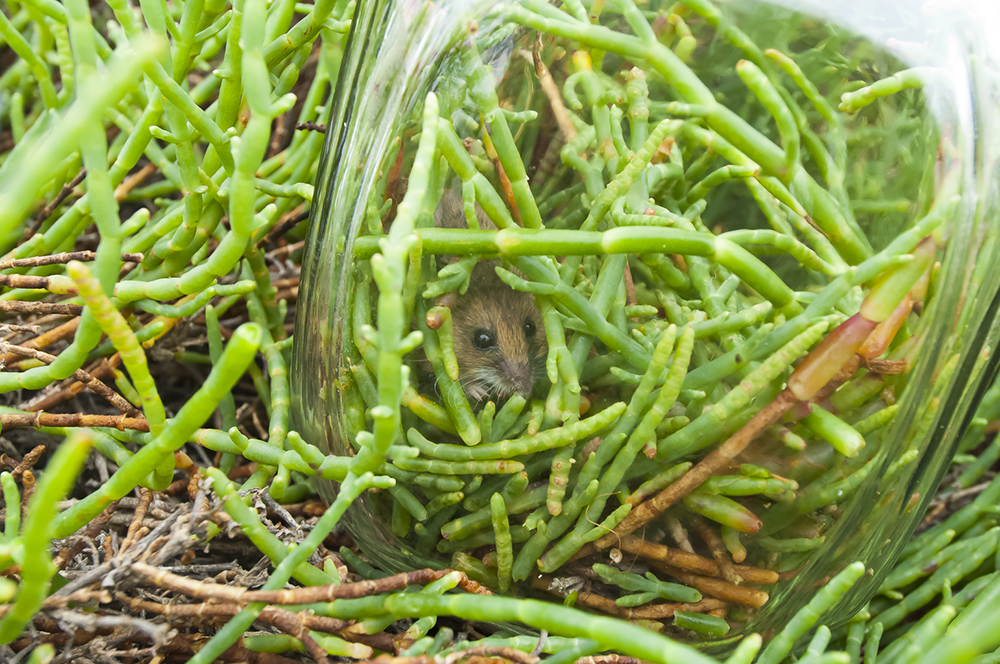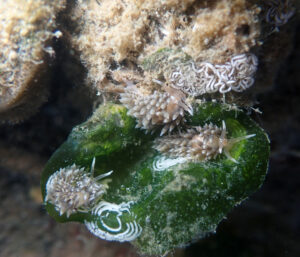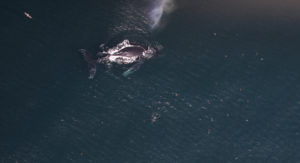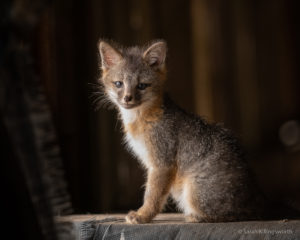This issue’s cover features a friendly character the photographer and I have been calling Salty the Cover Mouse. Filmmaker Judy Irving, of Pelican Media, photographed this salt marsh harvest mouse near Tolay Creek in the San Pablo Bay National Wildlife Refuge in 2010.
“I have been taking pictures for the South Bay Salt Ponds habitat restoration project for years,” said Irving, also the filmmaker who made The Wild Parrots of Telegraph Hill. “In 2010, I gave myself the challenge of getting a few good salt marsh harvest mouse photos because everyone one was using just a few old stock images.”
It’s no mystery why there are so few good salt marsh harvest mouse photos kicking around: For one thing, the animals, an inch tall on their tiptoes, are incredibly shy and hard to find in their pickleweed habitat. For another, they’re quite endangered, so it’s just fine if most of us don’t find them, bother them, take their pictures, and post them to Facebook.
Irving took this shot when she tagged along for a couple of days of fieldwork by Giselle Block, a biologist with the San Pablo Bay National Wildlife Refuge who’s an expert on salt marsh harvest mice.
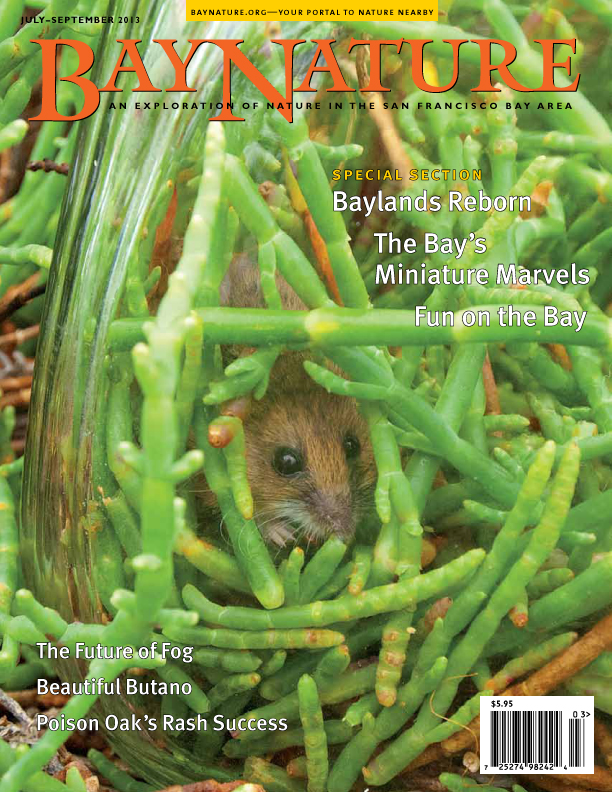
Block and her colleagues put out little “tin house” traps for the mice, with food inside, and then they return to check the traps, measure the mice, record a few data points, and very quickly let the mice go.
“I was allowed to work with these critters only for a few seconds each, because [the researchers] didn’t want to stress them out,” Irving explained. “So there were many attempts that didn’t work, and we let the mice go. And they were instantly invisible in the pickleweed, gone in a flash.”
The mouse on our cover is obviously in a glass jar, with some pickleweed to give it some sense of security (and a little background color).
Irving tried a few different approaches before she ended up using a Mason jar.
“My first try, the researchers kind of held it by the tail. I took a wide shot, and I was going to try cropping it in, but the mouse was just grabbing onto the pickleweed and trying to dive under the pickleweed. It didn’t look natural at all. The challenge was how to get a mouse to look like it wasn’t freaked out.”
On the second day, Irving brought some supplies: “I asked if I could bring up a clear plexiglass aquarium. I must have also brought up a variety of jars, not knowing what was going to work and knowing that reflections would be the big problem. I tried the aquarium, but it was too big and the mouse scampered to the very end. So then we put pickleweed into a Mason jar, and the shots I finally got, some were through the glass, and some were shot looking down through the top, not through any glass.”
The image’s selection for this issue’s cover is especially poignant timing for Irving: “This is sort of like my wow finish because my contract ends this month. I have been taking pictures of the South Bay Salt Ponds on a year-to-year contract over ten years. It’s been a good gig, but sadly it’s ending.” The project is running low on funds not just for restoration but also for documenting restoration.
But Irving and a few guest photographers captured a lot in ten years: An archive of about 5,800 images is hosted by the Resources Legacy Fund, which funded Irving’s work, along with the California Coastal Conservancy. The images can be used by government agencies, nonprofits, stakeholders, people interested in or working on wetlands restoration and needing images for nonprofit use.
Despite the end of this photo contract, Irving is busy enough, hard at work on a new film called Pelican Dreams.
“I have an 80-minute rough cut that I’m revising and I’ll be showing in the fall at the Bay Institute’s Theater at Pier 39,” she said. But there’s some suspense about whether the film will be ready in time: Her talent needs to cooperate this summer so she can get the footage she needs.
“There are two pelicans that have become the avian stars. I am tracking both pelicans, and there’s one sequence that has yet to resolve. It’s a documentary and this pelican has an ongoing life.”
Stay tuned for information about the screening.

